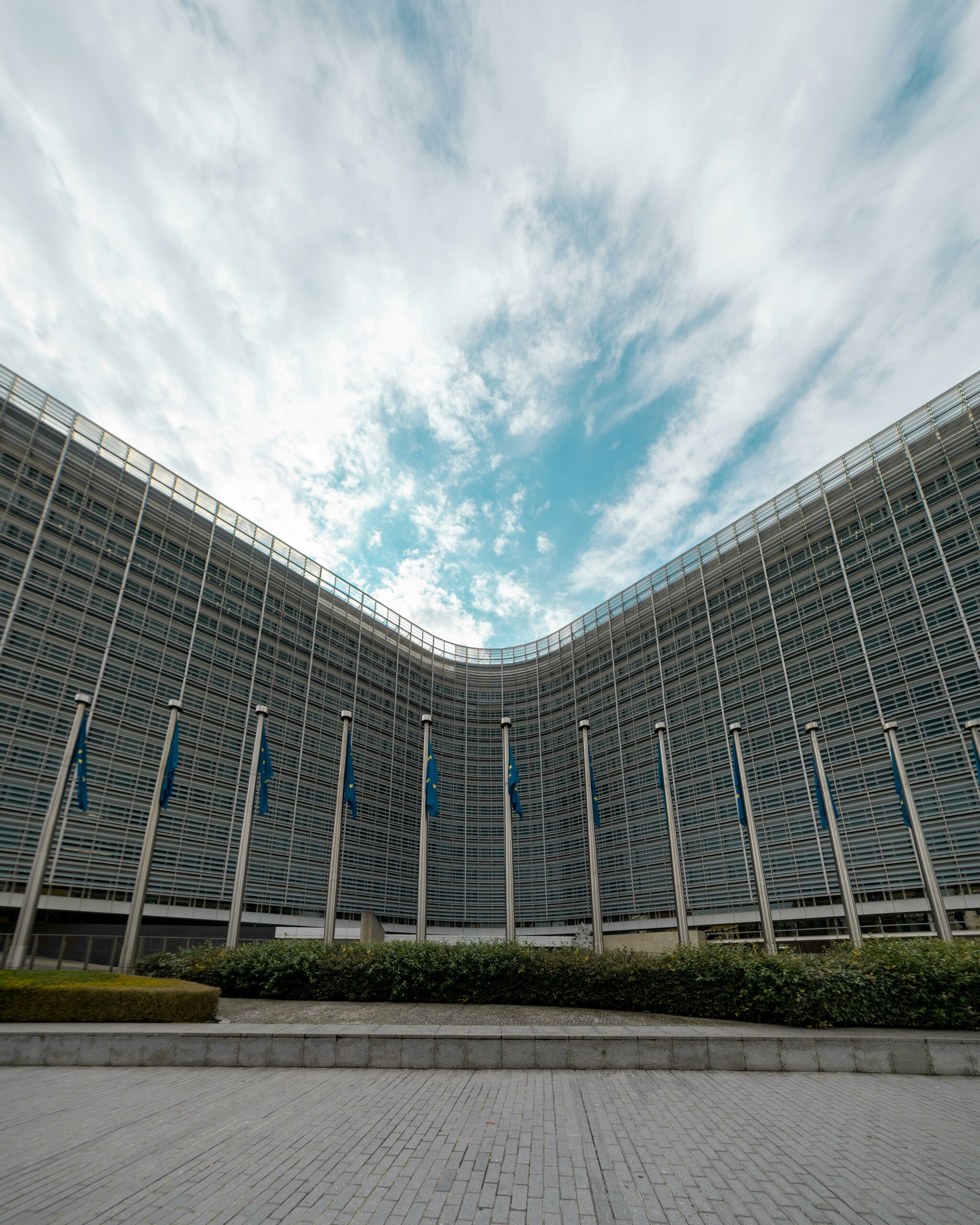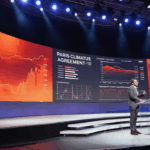The present article is a translation of an interview initially posted by Corporate Excellence‘s initiative “Corporation with a future“. Among decision makers of Blackrock, Ipsos, IBP, Telefonica and others, our CEO, Farid Baddache, shares his outlook on fostering inclusive capitalism for a Post-Covid Great Reset.
Ksapa recently entered a partnership with Corporate Excellence, a think tank created to promote intangible asset management and a reference in the Spanish-speaking world. Every year, Corporate Excellence publishes a study to strengthen our collective understanding of corporate and brand reputation, sustainable development, ethics and transparency. In anticipation of 2021 results, Corporate Excellence conducted a series of interviews with leading experts, among others from Telefonica, Blackrock and Banco Santander. Here, our CEO, Farid Baddache shares his outlook on fostering inclusive capitalism for a Post-Covid Great Reset.
Post-Covid Lessons For Public and Private Risk Management
It’s been 14 years since pandemic risks were first included in the World Economic Forum’s annual risk report. With Covid-19, that risk became reality. How it materialized and the extent of its impact indeed surprised all public and private organizations, regardless of country, sector and perimeter.
I was in fact living in Singapore in 2000. There, I experienced an episode similar to that of Covid-19. With NIPAH and then with SARS, Asian countries learned to take pandemics seriously and start managing them as top risks. Similarly, Brazil faced a dramatic propagation of meningococcal meningitis in 1975 and had to organize a vaccination campaign for 80 million. Sure, times are different. These different examples nevertheless demonstrate it is entirely possible to manage pandemics, depending on clear political will and proactive coalitions of different economic players.
4 Post-Covid Lessons for Cross-Cutting Risk Management
The risks highlighted in the upcoming Approaching the Future 2021 report are neither new nor impossible to anticipate. On the contrary, the spread of the Covid-19 was favored by a spiral of mismanagement at the international level:
- Economic and political decision-makers structurally underestimated risks. They indeed approached pandemic risks based on their low occurrence rather than their potentially high impacts.
- Risk prevention is now tainted by liberal ideology. Non-financial risks are not necessarily constricted to accounting calculations alone. For instance, European health systems relied on hospitals to organize masks stocks (and yet, they kept pressuring them to cut costs). Many were consequently left with no other choice but manage short-term emergencies. Even if that meant losing sight of equally essential issues in the longer run.
- Health risk management was met with collective disorganization. To name but one example, Europe panicked instead of prioritizing shared solutions. Member countries were essentially left to their own devices to mitigate adverse impacts. Companies likewise worked alone rather than develop solutions tailored to key territories, sectors or other strategic perimeters.
- Soaring mistrust and populism ended up radicalizing populations already subject to major social and identity divisions. That only made the collective effort required to manage the pandemic more complex and sensitive. Wearing masks (or not) is now akin to political activism, regardless of scientific recommendations. Case in point – the United States have now had more deaths linked to Covid-19 (more than 500,000!) than World War II.
Refining Strategic Forecasts for Integration in Business Plans
Certain risks warrant strategic integration in business models. There will undoubtedly be other pandemics. Climate change, water stress and biodiversity loss will generate their share of uncertainties. Terrorism, social tensions and cybersecurity also present major risks for business.
Here are 4 approaches to refine our collective capacity for strategic forecasting for a post-Covid Great Reset:
- Prioritize risks based on potentially high impact, not frequency. Consider the probability of the Fukushima power plant exploding in an organized, highly-specialized and risk-aware country such as Japan. And yet…
- Learn to manage seemingly contradictory injunctions. Combine short-term emergency management and the anticipation of long-term material issues. Deciding between one or the other will no longer cut it. We must address both head-on.
- Clarify the responsibilities of both public and private players in risk management, relative to their location or sector. Doing so allows them to prepare and organize their responses, ultimately streamlining collective action.
- Target science-based action – the prevalence of which can no longer be questioned today. Consider too fostering inclusivity among employees, citizens and other stakeholders. Stakeholder dialog is indeed key to designing solutions for operational acceptability, in a way that benefits both individuals and communities.
In Davos, world leaders shared insights on how best to stimulate the post-pandemic economy. This culminated in launching a Great Reset. In 2020 as never before, inequalities in fact increased all around, harboring economic, technological, health, racial and generational divides.
Articulating the Post-Covid Great Reset Around Climate
In my opinion, climate change forces us to reconsider everything. The challenge is to restructure economic activities to ensure their compatibility with a global warming trajectory “well below 2°C” by 2030/2035. Climate change is in fact our greatest collective challenge.
This calls for radical transformations, with key socio-environmental and digital considerations attached. Certain climate solutions in fact come with clear implications for water, biodiversity and waste management. Others reinforce inequalities and difficulties in access to employment. The mobility sector, for example, faces territorial and systemic challenges in job creation and destruction. Key digital services also aggravate the climate crisis. Consider the energy intensity of increasingly prevalent virtual tokenization (bitcoin, blockchains…).
3 Ingredients for a Climate-Forward Great Reset
Articulating this Great Reset hinges on planning and managing any adverse consequences linked to rolling out climate solutions. To that end, the following 3 key elements must be aligned:
- Science-based approaches – Programs must imperatively address the climate challenges of the next decade – and do so though science-based approaches. Current efforts are as of yet insufficient. Social sciences also carry valuable insights likely to help us secure the license to operate such transformations.
- Project clarity – A corporate, territorial or sectoral project demands continuous and inclusive dialog. That way, organizations may better anticipate and manage resistances.
- Pre-existing tools and mechanisms – Depending on how they are used, preexisting tools and mechanisms can either be part of the problem or part of the solution. In that respect, the digital revolution is already underway. Financial resources are also available in abundance. These are so many key components to securing a climate transformation with a strong social component.
Ensure Corporate Transitions Address Post-Covid Societal Needs
Companies have a triple responsibility:
- Climate Change – They must ponder their contribution to the climate crisis. In other words, are they part of the problem or part of the solution? Such a sober assessment must in fact become the cornerstone of corporate transformations. Companies must better apprehend the factors that will determine their financial and economic survival as well as social acceptability in the coming years.
- Stakeholder Engagement – Once such foundations have been laid, companies must engage in effective stakeholders dialog, which is to say regulators, customers and suppliers, etc… Thanks to a better awareness of the stakes, stakeholders can contribute to accelerating corporate action by identifying concrete and ambitious solutions in the event of a crisis.
- Bold Action – Finally, companies must implement ambitious and cross-cutting transformation plans. This entails businesses manage stakeholder expectations, by demonstrating their progress to date (results disclosures). They must also explain how they plan to move forward with the transformation (developing vision) so that they may actually achieve their medium and long-term goals. When it comes to climate change, whether a company has reduced its greenhouse gas emissions by 40% is of little import to an investor or customer. They instead tend to seek proof of corporate voluntarism, for example in the form of a clear carbon neutrality agenda by 2030+.
Debates at Davos made the urgency of aligning the alignment corporate performance and capital mobilization resoundingly clear. That could not be truer in the context of post-pandemic recovery. That said, companies, banks and investors face a dilemma: they must navigate a multitude of different standards to measure and manage their progress against their sustainability agenda.
Navigating ESG Standards with Consistency and Stakeholder Confidence
ESG strategies could not be more diverse. Some frameworks echo the basic principles of integrity. Others adopt a Human Rights stance (without necessarily providing indicators to back it up). Others still consider their ESG funds align with the Paris Agreement though a number of their investment lines clearly go against a 1.5°C global warming trajectory. In any case, leaders would be hard pressed to substantiate their claims.
If there is to be but one certainty regarding ESG fund comparability, it might be this: institutional investors have a fiduciary responsibility to safeguard their beneficiaries’ financial interests. They in fact have the tools – in the form of capital allocations – to support the integrity and stability of the entire financial system. As such, they are in a position to reward responsible behavior and exert a positive impact on global issues. That is how they ultimately fulfill their mandate.
The more the funds deliver on their ESG promises, the more they may improve their performance – that is, without compromising their financial potential. Once these conditions are met, they may generate solid financial returns while meeting ESG criteria. As a result, investors should start planning the extension of ESG funds to their entire portfolio sooner rather than later.
Streamlining ESG Standards for Comparable And Consistent Reporting
Corporate non-financial disclosures have considerably improved in recent years. A number of voluntary reporting instruments (such as the GRI, SASB, IICR, CDP, TCFD and CDSB) indeed help companies report ESG data in a more relevant and comprehensive manner.
In 2020 alone, various initiatives were designed to further harmonize corporate ESG reporting. The European Commission for instance intends to revise its Non-Financial Reporting Directive (NFRD) to promote more reliable and comparable disclosures. The Davos Forum likewise developed its own standard. Based on pre-existing indicators, it is structured around 4 pillars of governance, population, planet and prosperity. In October 2020, the IFRS Foundation (which hosts the International Accounting Standards Board) similarly launched a public consultation on creating a Sustainability Standards Board. Finally, 35 institutional investors (representing $8 trillion in capital) committed to transitioning their portfolios to achieve carbon neutrality by 2050.
The situation is rapidly evolving towards convergence in the not-too-distant future. It will down to investors to promote the standard that most effectively supports their investment decisions, in a way that meets ESG goals and criteria – without compromising their financial returns.
Conclusion | Seeking Post-Covid ESG Excellence
One cannot overstate pandemic risks are neither new nor impossible to anticipate. Other risks will (soon) materialize in various forms, countries and scopes. The pandemic crisis however caught organizations unawares, sparking a spiral of spiral of mismanagement globally. So what now? First and foremost, we must collectively refine our capacity for strategic forecasting, to ensure full operational integration. Such approaches will undoubtedly soon be put to the test by climate risks.
Moving ahead, there are also key opportunities for global players able to demonstrate ESG excellence. Those able to fulfill their ESG promises today – and prove it – will be the ones to come out roaring out of the Covid crisis and other upheavals on the horizon. Reach out to Ksapa so we may consider the best way to get you started. Our team and community of 150+ experts are based in the G20 economies, but also in Africa and South East Asia. This way, we can help you roll out multidisciplinary and contextual expertise to address such sensitive and complex issues.
Author of several books and resources on business, sustainability and responsibility. Working with top decision makers pursuing transformational changes for their organizations, leaders and industries. Working with executives improving resilience and competitiveness of their company and products given their climate and human right business agendas. Connect with Farid Baddache on Twitter at @Fbaddache.






